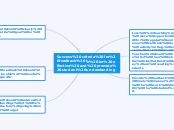por Janice Leung 7 anos atrás
463
Success criteria for feedback to be effective and promote student understanding
Effective feedback for students should be goal-oriented and tied to a clear set of expectations outlined in a rubric. When students engage in activities, they should have access to this rubric and understand the purpose of their tasks.









